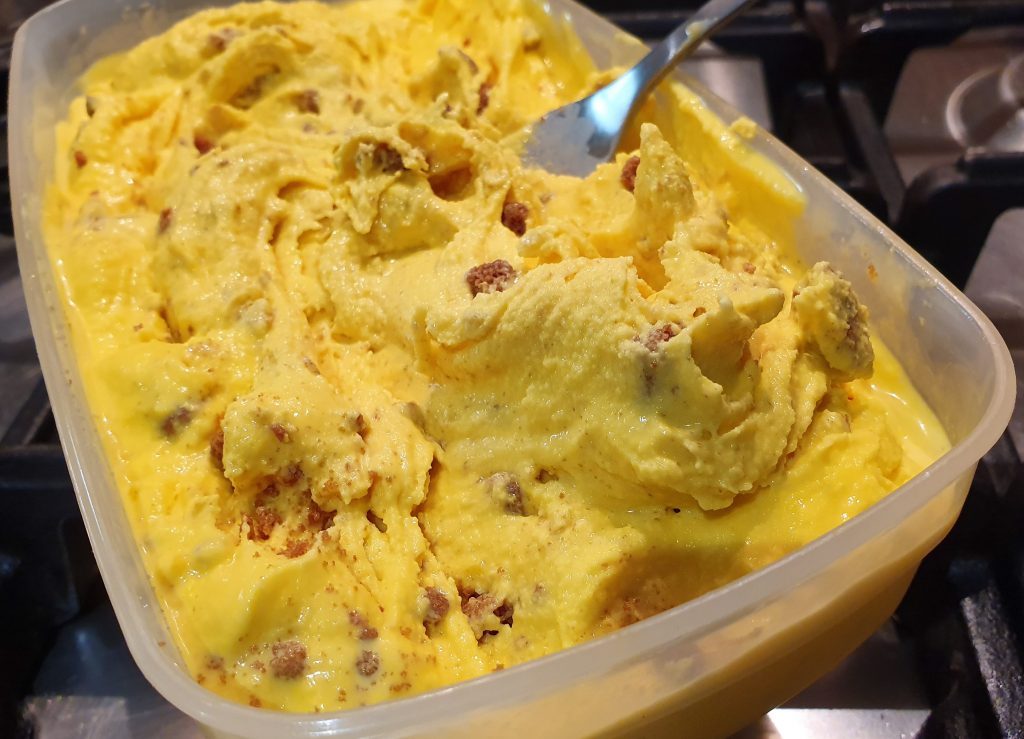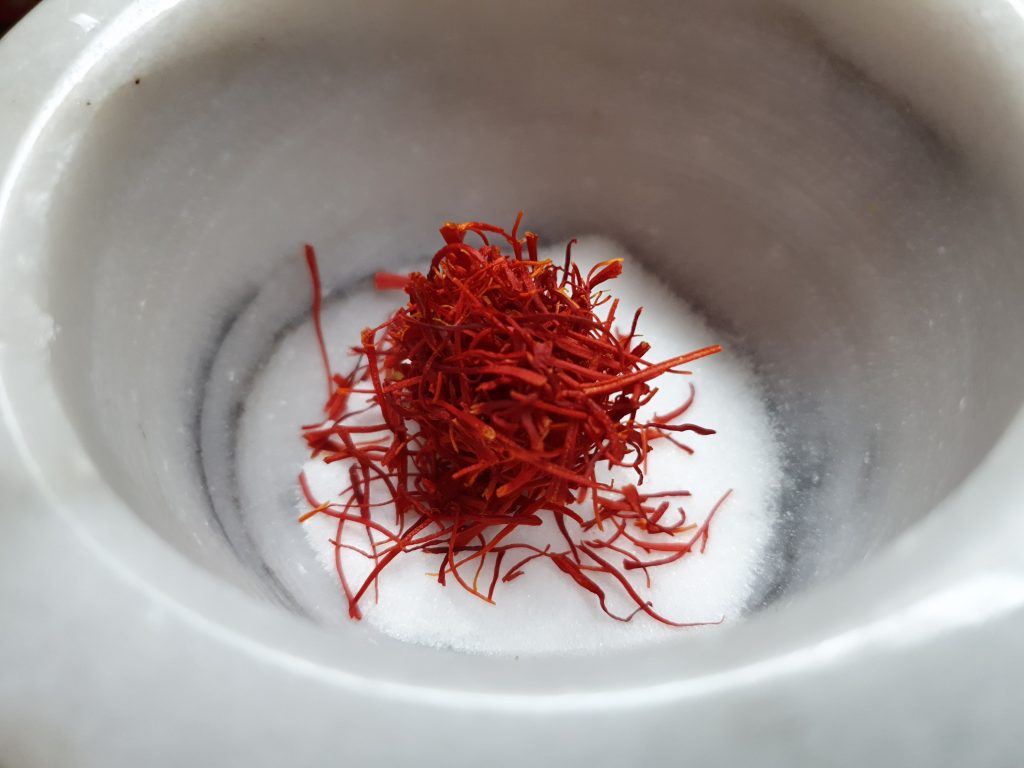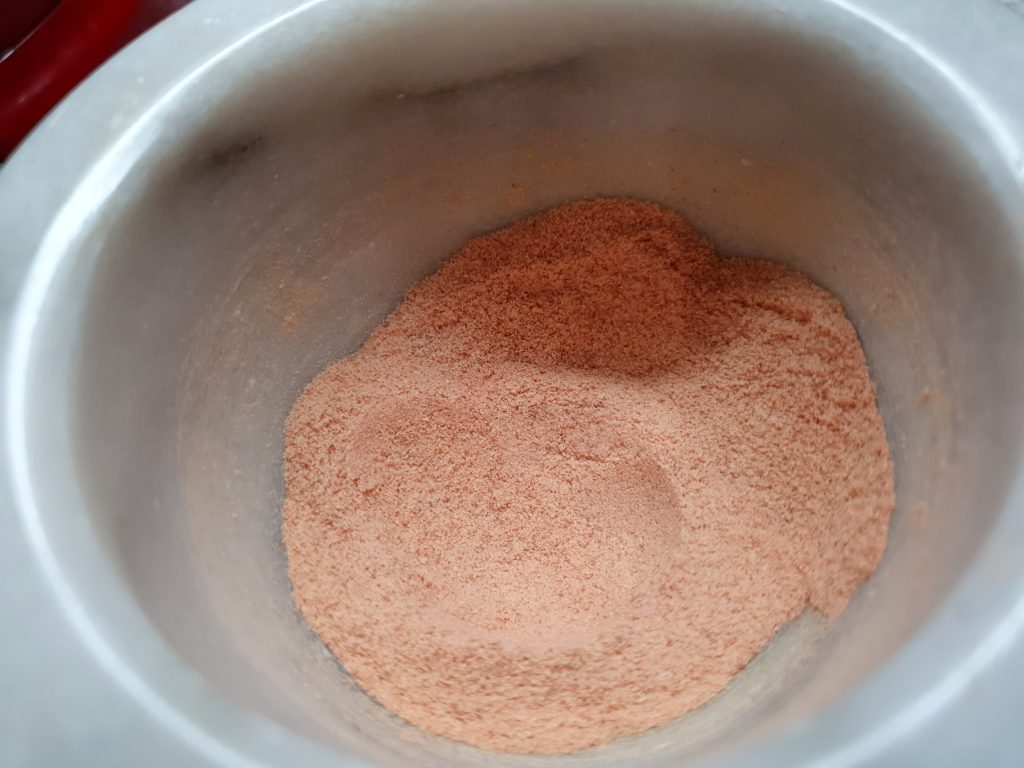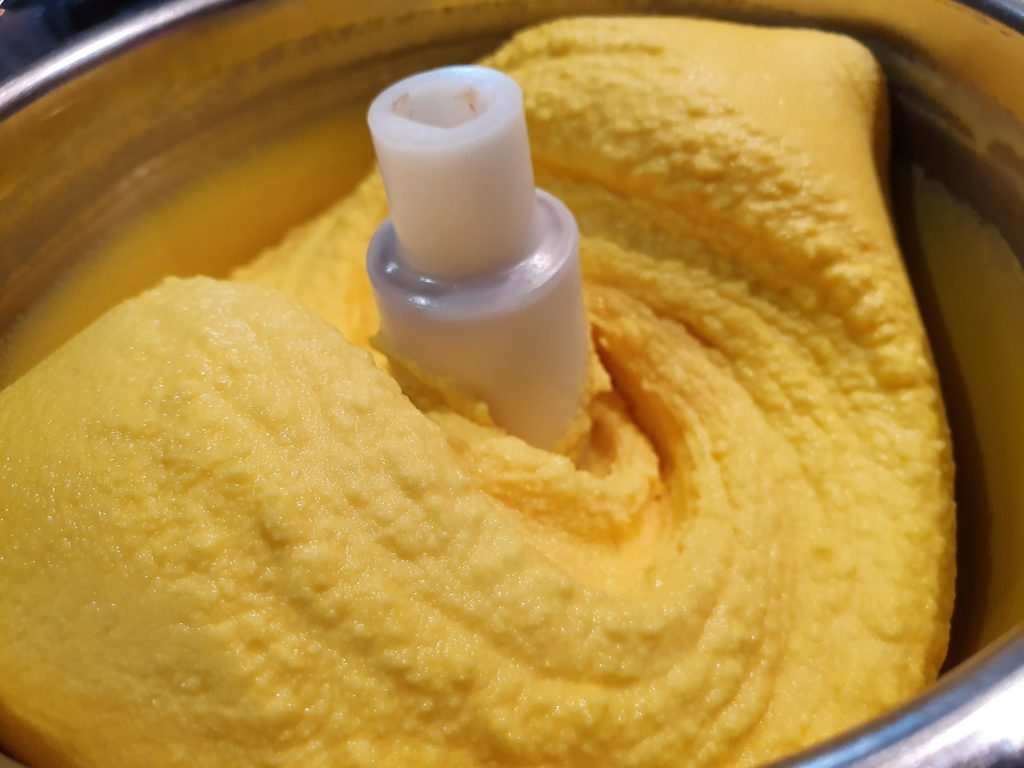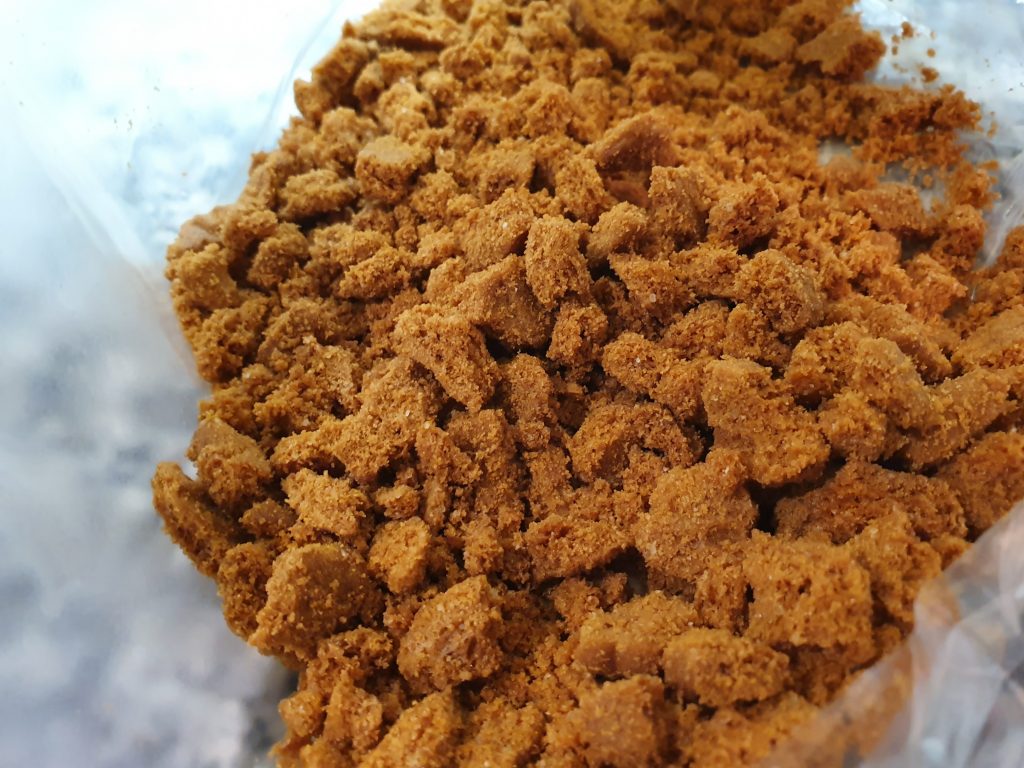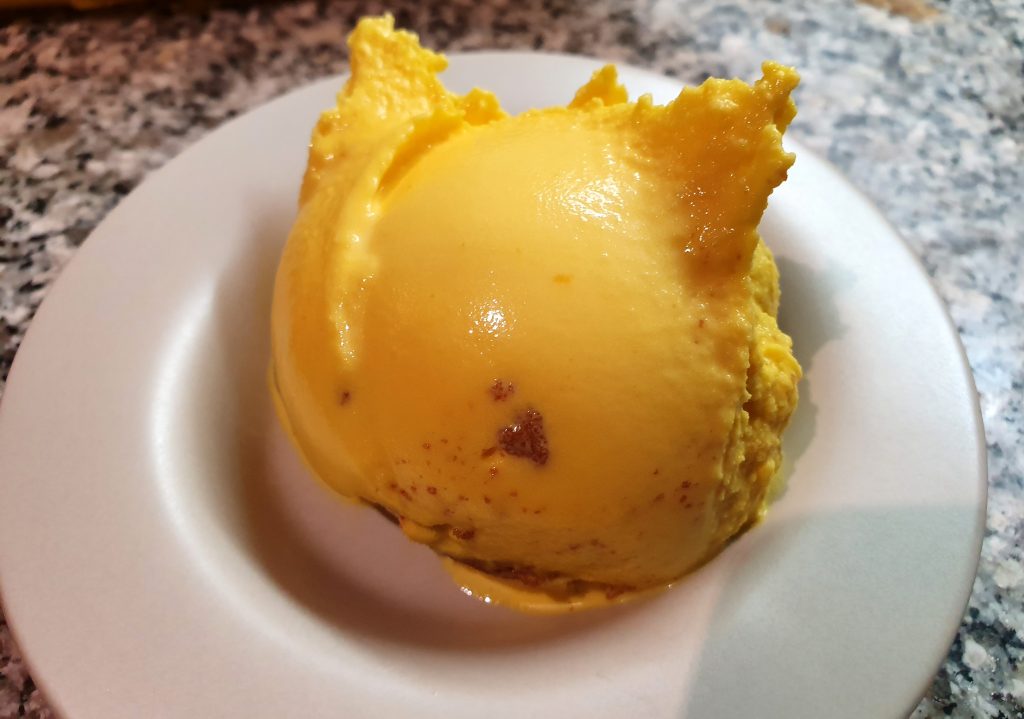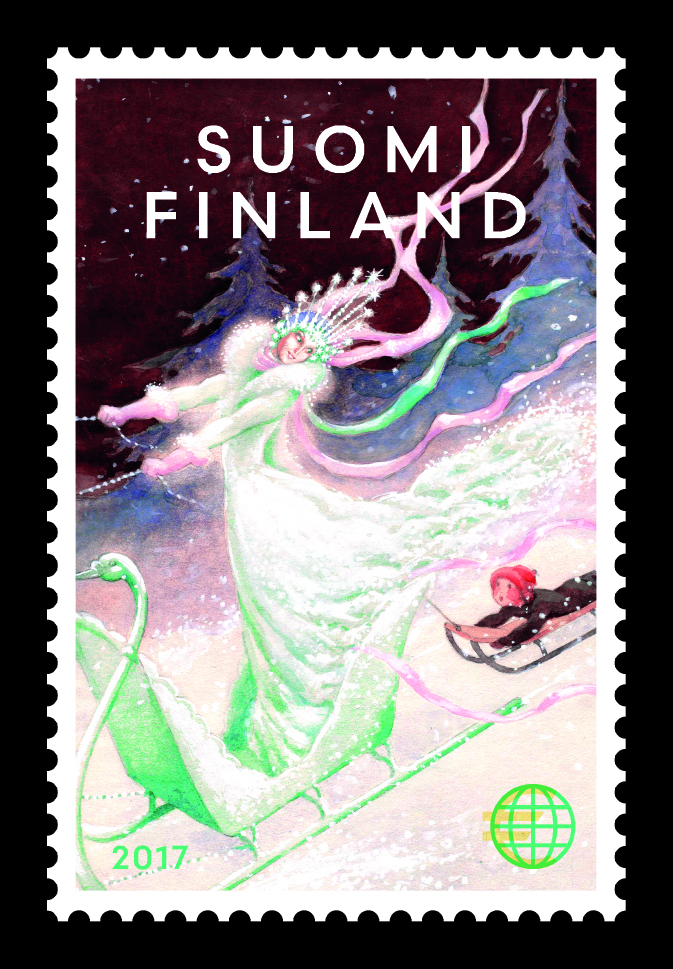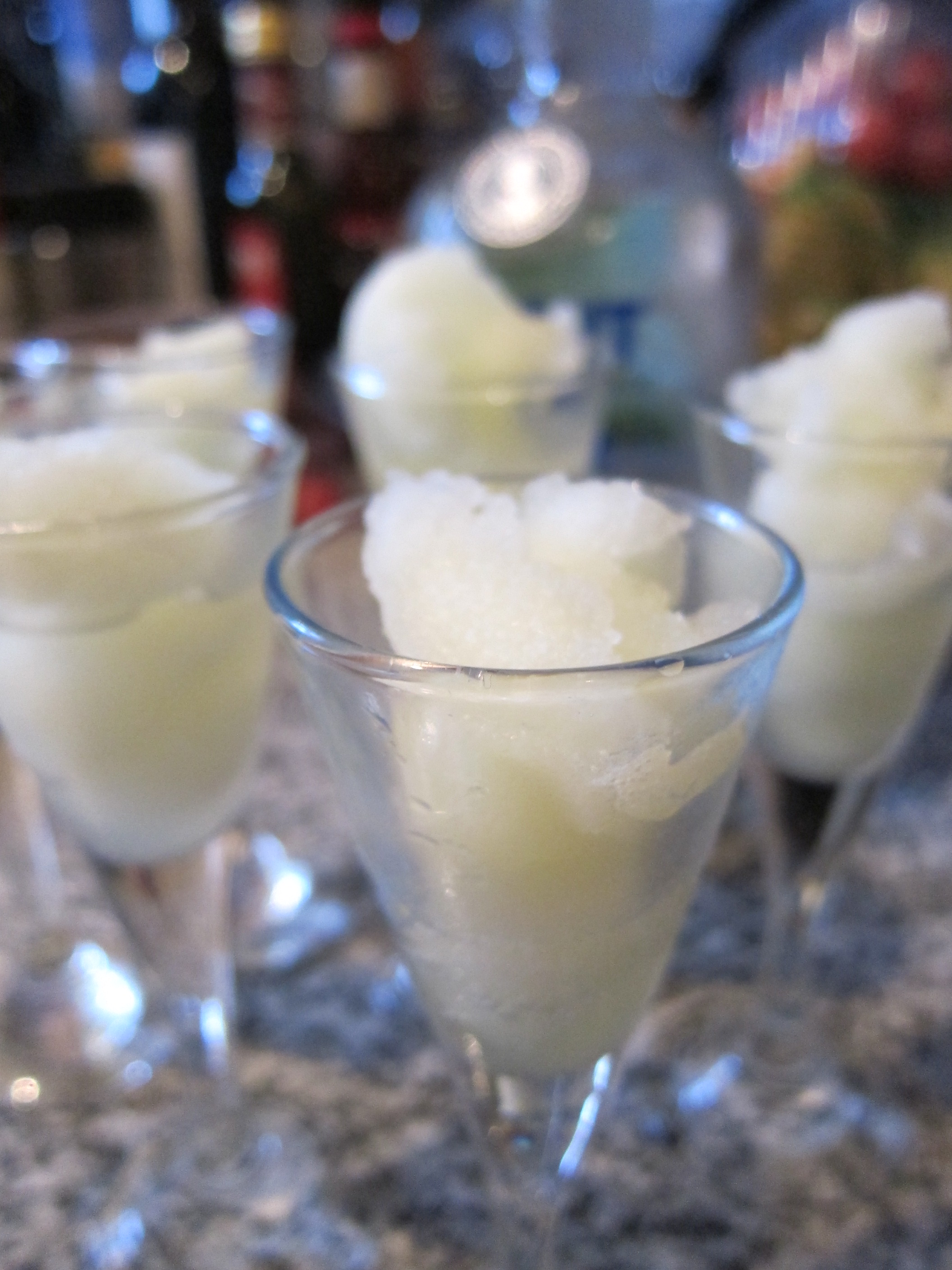Saffron Honey Gingerbread ice cream
Christmas ice cream time is coming! Saffron – the world’s most expensive spice – and gingerbread cookies are flavours with special connection to Christmas, and avid readers knows that we already explored quite a number of gingerbread- and saffron ice cream recipes on the blog. But what if we were to combine these delightful flavours?
Combining saffron and gingerbread?
When combining flavours in ice creams, the result can be a lot of things: a harmonious blend, a total mess, or a mix of still clearly distinguishable parts.
This ice cream aims for the latter: a saffron ice cream base with gingerbread cookie crumbles!
While there are many nice saffron ice cream recipies to choose between, I chose a Sicilian gelato-based one this time. Sicilian gelato has all the major qualities of a classic custard-base, but is eggless and does not contain that much cream (fat) either! Instead, added corn starch ensures the pleasant and smooth consistency. To sweeten things even further (while also reducing the iciness of the final ice cream), I also replaced some of the usual sugar with honey! (Honey, as you may know, is a type of inverted sugar: inverted sugars typically act as more powerful freezing-point depressors than “normal” white sugar (= providing more anti-freeze and preventing the creation of nasty large ice crystals).
For the gingerbread cookies, I took the easy way out and simply bought some good ones: if you like to bake, do use your own 🙂

If you make your own gingerbread cookies – by all means, consider using those! But store-bought cookies will work well too 🙂
 The Saffron
The Saffron
Those interested in saffron can read more about this fascinating spice in this post.
It takes an enormous amount of saffron crocus flowers to produce just a few grams of dried saffron, making it a prime contender for “most expensive spice on earth”. Fortunately, a very small dose goes a long way: we will only need 1/2 gram. While buying saffron already powdered usually works fine for me, many affecionados swear by the need to do the pestling on one’s own – which I did this time, and which also worked out very well.
The Sicilian gelato base
While Sicilian gelato requires cooking on the stove, it is still easier to prepare than a typical, egg-based custard ice cream. Why? – Instead of eggs (a typical core-element in custard bases) we will use (corn) starch for stability and texture! While some may miss the “eggy” flavour touch that eggs in ice cream bring, the starch will take care of all other (consistency-related) things that egg yolks do so well, and will also allow the flavours to shine without the “eggy” touch (whether or not you prefer the “eggy touch” is clearly something for you to consider – nothing stops you from converting this recipe and use a “normal” custard base made with eggs!).
Without eggs, however, we won’t have to worry about creating scrambled eggs by mistake: unlike eggs, heating a starch-base is quite easy – no need for strict monitoring of particularly temperatures that must be maintained, neither for the thickening nor for the pasteurisation: starch only needs about 50°C (122° F) in order to begin to thicken (“gelatinize”), and will still behave rather robustly also on higher temperatures (that said, the base should preferably never boil as high temperatures actually would tend to “thin out” the base by reducing the starch-impact).
Before turning our full attention to the cooking of the base, we should begin by preparing a mixture of cold milk and starch in a separate bowl: set it aside for now. We will add it to the heated ice cream base later on.
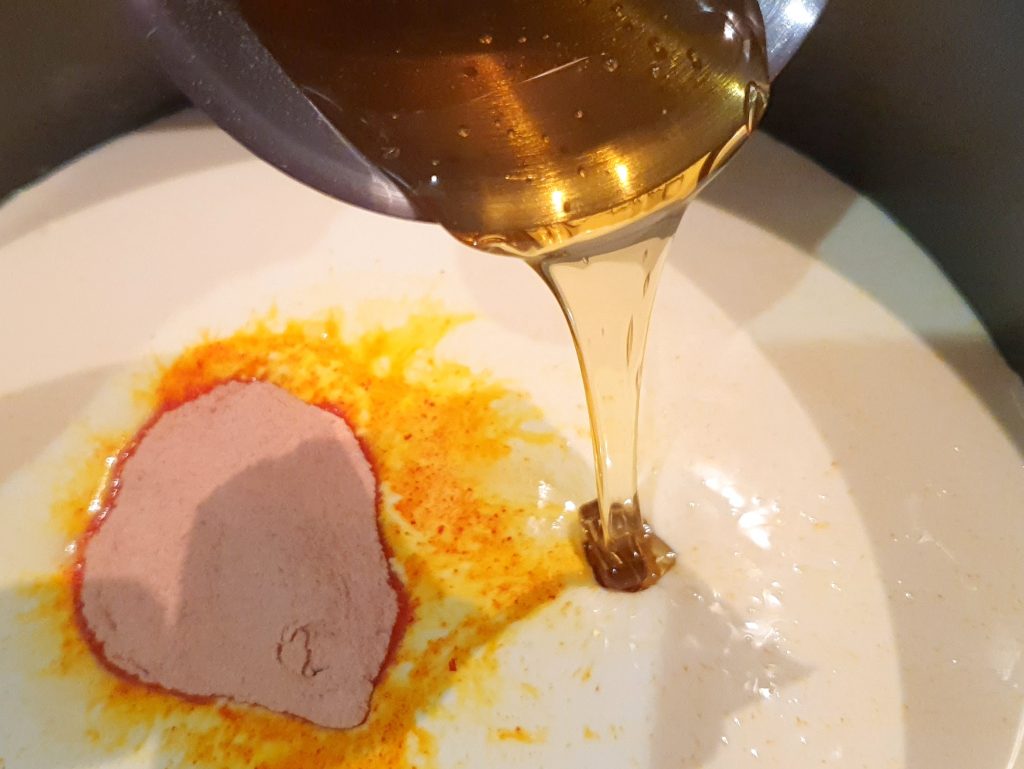
All ingredients (except for the starch-mixed milk) can safely be mixed together already from the start: the sugar, the honey, the saffron and the remaining dairy. A pinch of salt enhances the main flavours without making the ice cream “salty” in any way.
Since heat releases the saffron’s flavour essence, we can put both the saffron and (most) other ingredients together in a sauce pan directly on the stove (save for that starch-milk mix which we just set aside for later, that is).
Whisk it all together and bring to steaming hot/almost-boil. Now, add the starch-milk mix and continue to whisk regularly.
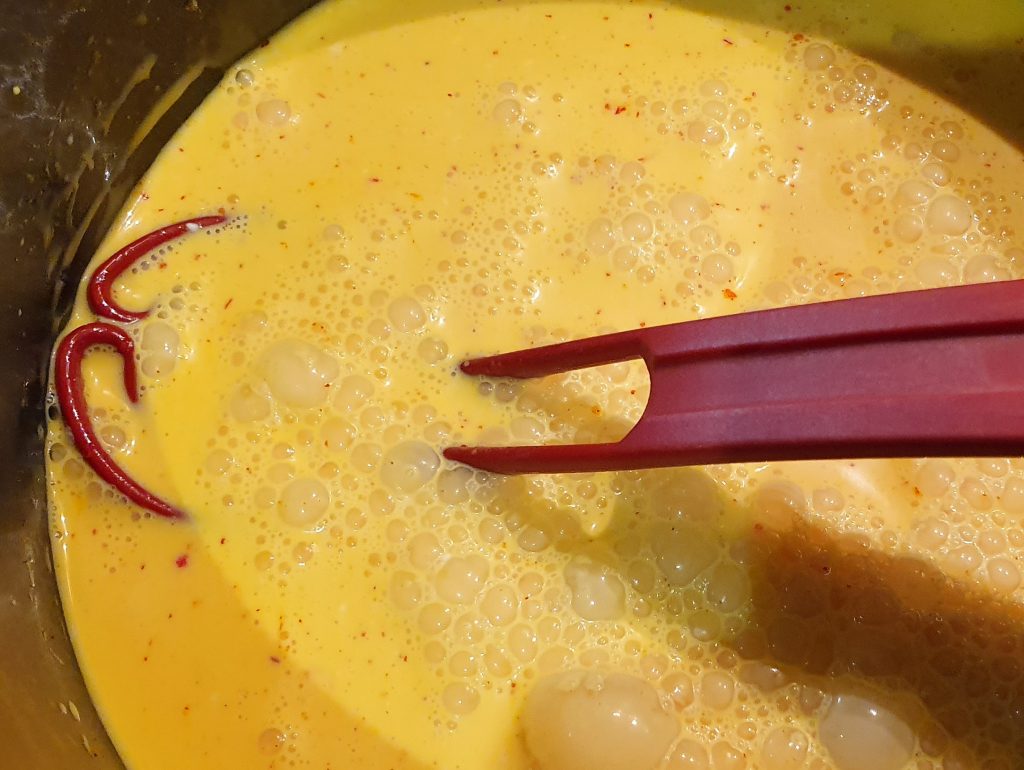
I never tire of looking at the saffron-induced colour – even at this early stage, the base mix looks great!
As just noted, starch only needs about 50°C (122° F) in order to begin to thicken. But to get the most out of the starch, we should still bring our ice cream base up to at least about 70°C (158° F). This process is, however, fairly fail-safe, does not really require any actual thermometer-checking but merely some regular whisking for a few minutes – just make sure that the base does not boil, that the starch has been properly dissolved, and that the milk does not get scorched (burnt) while the base thickens somewhat. All in all, the whole cooking-part might well be over in less than ten minutes.
Once the base has thickened somewhat and all possible flavour-traces of the starch has disappeared, it is time for the cool-down. As always, do this as quickly as possible, for instance in a kitchen sink filled with cold water (my favourite method), possibly even adding ice cubes to speed up things even further. Once cooled down, the base should be chilled further in the refrigerator before the churning.
When the ice cream base (preferably) has chilled for a few hours at least, churn it in your ice cream machine!
In case you have no ice cream machine, remember that Sicilian gelato-bases tend to be excellent for still-freezing (i e, preparing your ice cream in the freezer).
Adding the gingerbread cookie-parts
Adding the gingerbread cookies is very simple: I prefer to put them in a plastic bag and crush them to the size I like. In this case, I would suggest that you aim for small pieces since powdering them would make the unrecognisable as add-ins, and larger pieces would risk to stand out too much/freeze too much apart inside the final ice cream. So – small but still crumbles, rather than totally crushed!
You can add the crumbles to the almost-finished ice cream during the end of the churning. This is how I usually do. However, you can also let the ice cream churn, put it in a freezer-safe container and simply mix in the crumbles with a fork. If you add the crumbles like this, remember to put the ice cream in the freezer for at least an hour or so in order to let the cookie crumbles “integrate better” a bit before serving!
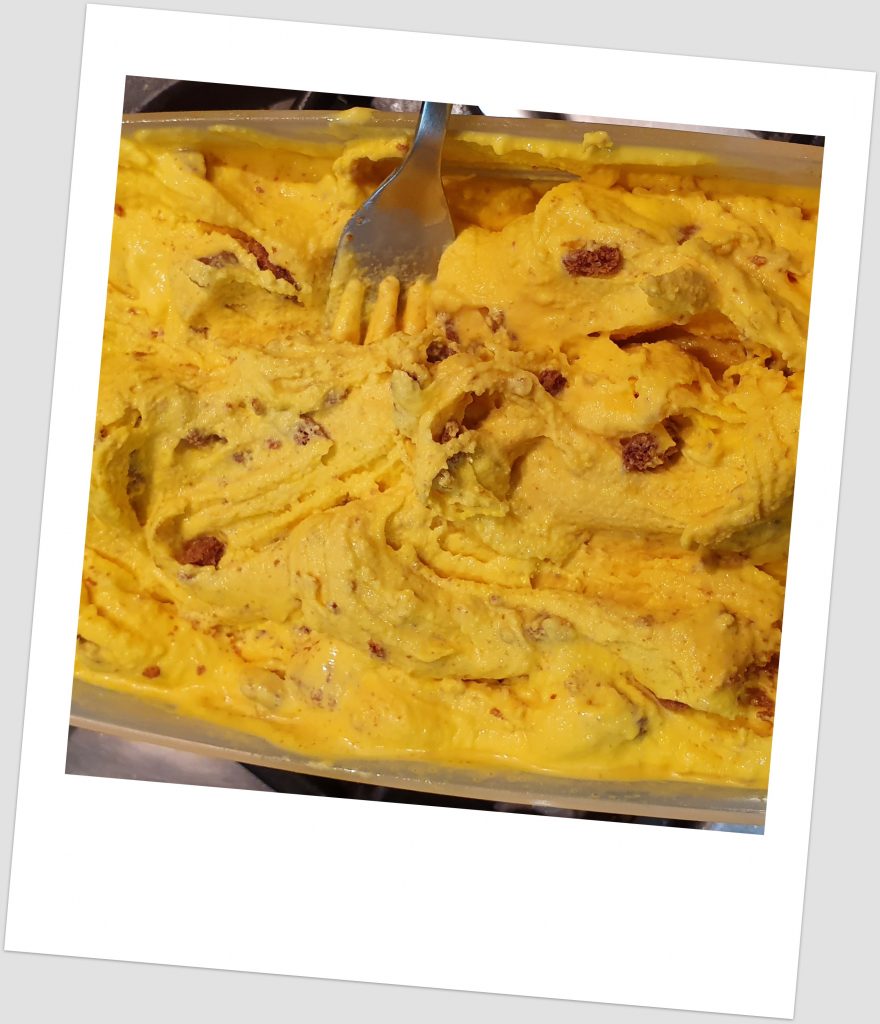
Mixing the cookie crumbles into the saffron base – a piece of cake with a fork or something similar to do the mixing!
A dream of saffron, honey and gingerbread
The outspoken actress Mae West famously said that “Too much of a good thing can be wonderful”, and this may be a good description of this Christmas combo. The refined saffron and the crowd-pleasing gingerbread flavours do not merge but co-exists in surprising harmony. And the Sicilian gelato base allow both of them to come out exactly as they should!
- 300 ml (1.25 cup) cream
- 400 ml (1.7 cup) milk
- 50 ml (1/4 cup) sugar
- 50 ml (1/4 cup) honey
- 3 tablespoons corn starch (or equivalent type of starch)
- 0,5 grams genuine saffron powder
- (optional; about 1 extra tablespoon honey (or, if you prefer, any other type of inverted sugar such as Agave nectar, corn syrup or their likes)
- good pinch of salt
- about 50-100 grams gingerbread cookies (crumbled)
- Mix 200 ml (0.8 cup) of the milk with the corn starch. Whip together, making sure there are no lumps left. Put aside.
- Pour the rest of the milk, the cream, the sugar and the honey, the vanilla, the saffron and the salt in a saucepan. Stir to dissolve the sugar and the salt, bringing the mixture to steaming hot (but not to a boil). Now, add the milk-corn starch blend and whisk everything together.
- On low-medium heat, still without quite reaching a boil, continue to stir for a few minutes (about five minute should generally do) until the mixture has thickened somewhat and any possible flavour-residues of the starch has disappeared completely.
- Take off from the heat and let cool. Then, chill the base thoroughly in a refrigerator.
- Towards the end of the churning, add the crumbled pieces of gingerbread cookies (or stir them into the finished ice cream: both ways work fine)
- When chilled, freeze according to the instructions of your ice cream machine, adding the raisins and any remaining mulled wine to the base towards the end of the churning [if added too early, the raisins will likely sink to the bottom ...].
- Just take the chilled base from the fridge and put in in a freezer-safe container, cover with plastic film and the lid. Put the container in the freezer.
- After about 45 minutes, take out the container and whisk through the base with a fork or similar, making sure to "even out" frozen parts and break up any large ice crystals being formed.
- Return the ice cream to the freezer, then repeat the 'manual churning' about every 20-30-40 minutes (depending on your level of vigilance; you should preferably begin to churn more frequently the firmer the ice cream becomes) for about a couple of hours or four.
